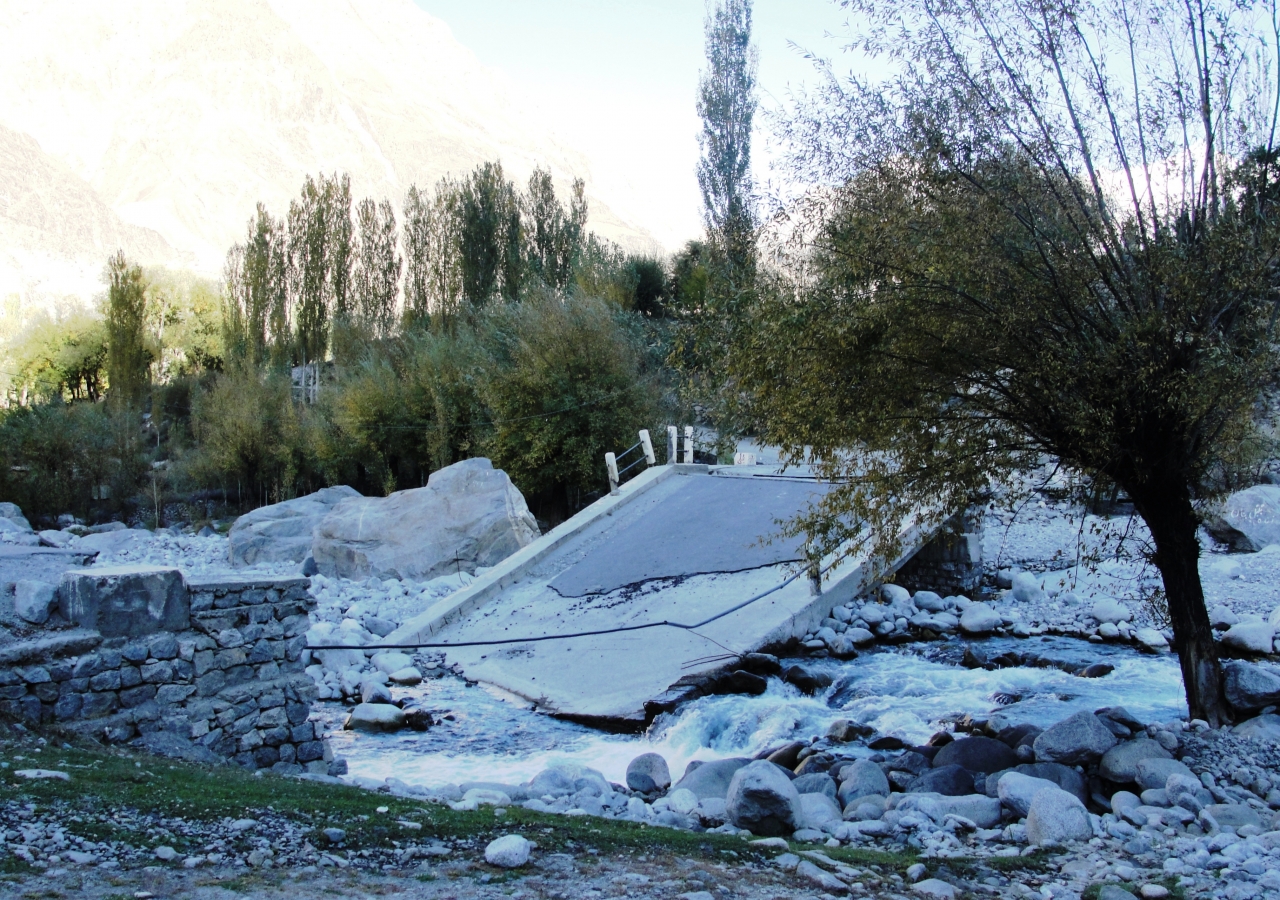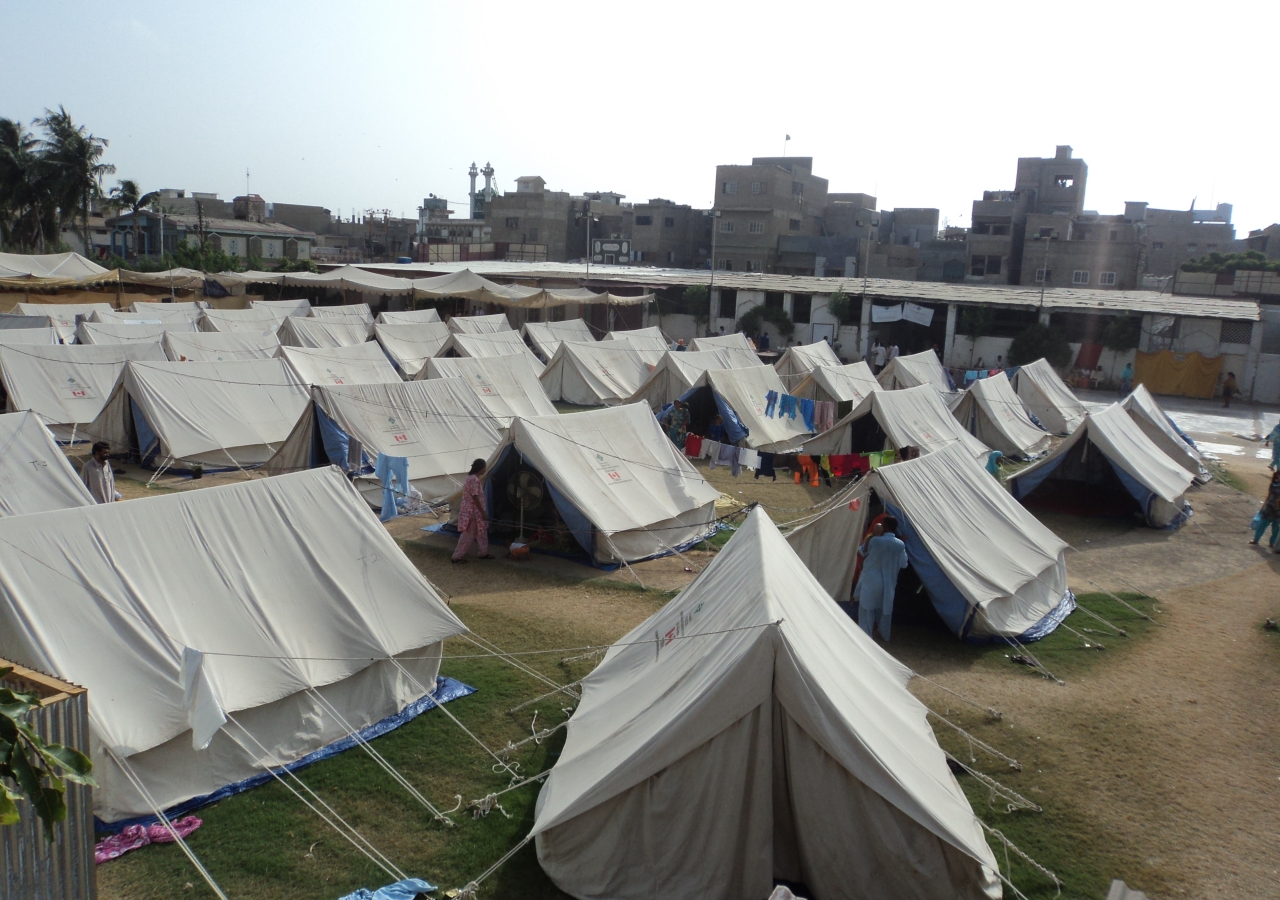They call it the Lion River because on a dark night the noises it makes while passing through narrow gorges can easily be mistaken for the roars of an enraged lion. Originating as a small glacial spring in the Tibetan mountain, the Indus River passes through the Himalayan and Karakoram mountain ranges and gradually culminates in an enormous water body, fed by hundreds of powerful torrents.
Some people praise the regions surrounding the Indus River as a cradle of civilisations and a benefactor of the world's oldest human settlements. However, the millions of people recently displaced by the lethal waves of the flooded Indus might feel otherwise. The massive flooding has caused devastation across the region, destroying more than 1.4 million acres of cropland and over one million homes. The result has been nothing short of one of the world's largest natural disasters.
Jafar is one of the millions across Pakistan who are not happy with Mother Indus, a name of reverence given to the river by villagers living on its bank. “Look at what it has done to my fields and crops”, he complains, flailing his arms in disgust towards the land covered with cracked and slippery drying mud.
Jafar had recently returned to his native village in rural Sindh from a relief camp established by Focus Humanitarian Assistance (FOCUS) Pakistan in Karachi, one of many set up to assist those who had been displaced by the massive flooding. Almost one hundred families from the Tar Khuwaja locality of Sindh are still residing in temporary shelters in Karachi.
 Mashroof, 7 and his 12-year-old brother stand in front of their leveled house in the Hayem village of Punial. Lower parts of Hayem were flooded by the swollen Shandur River, displacing dozens of households and filling the village land with boulders and mud. Courtesy of FOCUS
Mashroof, 7 and his 12-year-old brother stand in front of their leveled house in the Hayem village of Punial. Lower parts of Hayem were flooded by the swollen Shandur River, displacing dozens of households and filling the village land with boulders and mud. Courtesy of FOCUSReceded floodwater has left muddy stains on the outer walls of Jafar's house but the damage is minimal compared to the wreckage seen across homes and livelihoods located in the south. Jafar is lucky to have his house intact. The rains and floods have demolished more than 1.65 million houses in 78 districts of Pakistan, resulting in the loss of nearly 2 000 lives, and leaving approximately 20 million people destitute, without food and clean drinking water.
On the other side near the Shandur river, 7-year-old Mashroof, stands near a huge boulder, constantly looking at a vast stretch of stone-studded land on the left side of the Shandur River. Barely audible, he explains how the massive floods have destroyed the fertile land.
“These stones were not here earlier,” he says, “not even this one.” Mashroof points to a boulder near which he was standing. “He knows more about it,” Mashroof suddenly waves towards another boy, who appears from behind a cluster of trees.
“The name of our village is Hayem,” the 12-year-old boy says. “The flood has destroyed it completely and now our people are living in tents up there,” he says, indicating an elevated portion of the village. The people of Hayem had to evacuate their homes as water from the flooded Shandur River washed out their village. “Come see our tent.”
He runs towards the cluster of trees from where he had emerged. The small tent in which Mashroof and his elder brother live with their family is not winterised.
Winters in this part of the world are unbearably harsh. People spend most of their time inside their houses, which are heated by burning timber and dried shrubs. While there is plenty of wood and shrubs available, Mashroof's family is not willing to start a fire because of the dangers associated with lighting a fire inside or close to the tent.
With assistance from the government of Pakistan and civil society organisations, including FOCUS and agencies of the Aga Khan Development Network, the largest humanitarian relief operation in the history of Pakistan – and perhaps even globally – was deployed. Despite this significant effort, a serious food security threat emerged in the Gilgit–Baltistan region due to the closure of the Karakoram Highway, and damage to critical infrastructure.
FOCUS Pakistan, in collaboration with various government and AKDN agencies, and with the support of numerous volunteers, was able to respond immediately by providing food relief to affected people in the most remote parts of Astore, Diamir, Ghanche, Ghizar and Skardu.
“We transported around 1 500 kilogrammes of food and non-food items by hand from Hundur to Darkut, around 25 kilometres apart,” said Zar Wali, captain of the volunteer Community Emergency Response Team (CERT) of the Yasin Cluster. When asked what motivated them to embark on such an extraordinary task, he responded: “We knew that the people were in difficulty and needed our help.”
“The task was very difficult. We had to wade through flood water in heavy rain with loads of around 55 kilos on our backs for more than 600 metres between Damalgan and Gandaye,” villages in the Yasin Valley. Thirty CERT volunteers participated in this inspiring humanitarian relief operation, facilitated by FOCUS staff.
“An important bridge at Gupis had been washed away and a makeshift bridge constructed by the local community was too weak to bear the weight of a loaded vehicle so we had to transport all the relief items to the other side on our backs,” a training officer of FOCUS Pakistan said. “When we reached Damalgan en-route to Hundur – one of the most affected villages – our vehicle got stuck in the fresh flood debris and we had to shift the relief items again to the other side.”
 Displaced children from rural parts of Sindh enjoy a game of cricket at a relief camp established at the Aga Khan Gymkhana in Karachi. Courtesy of FOCUS
Displaced children from rural parts of Sindh enjoy a game of cricket at a relief camp established at the Aga Khan Gymkhana in Karachi. Courtesy of FOCUSTo protect against the threat of water borne diseases and illness the Aga Khan Health Services (AKHS) helped to provide medical teams, supplies, and medications to those residing in camps, with particular attention given to mothers and children. Mobile medical teams were also deployed to high priority areas to provide health care and medication to remote villages and areas that did not have access to the health centres established by AKHS. FOCUS, together with the World Health Organisation, UNICEF, the local government and AKHS, also established a committee to manage the healthcare services being provided to the affected people of Sindh.
FOCUS' relief efforts were supported by hundreds of volunteers across Pakistan. Large numbers of Girl Guides and Boy Scouts came together to arrange recreational and educational activities for around 3 000 people displaced from different parts of Sindh. Volunteers of the Community Emergency Response Teams (CERT) and others in Chitral helped the local population to transport their possessions to safer locations. They also developed a team of volunteers to manually monitor the Booni glacial stream that had flooded, posing serious threat to human settlements.
“We are truly inspired by the spirit of volunteerism displayed by all segments of the society,” said Khadija Jamal Shaban, Chairperson of FOCUS Pakistan, of the volunteers who worked in institutional and individual capacities to provide relief to the people in despair. “We may never have been able to respond at this scale on our own,” she noted.
While the raging Indus River and its tributaries wreaked havoc on hundreds of ancient villages, towns and cities, the disaster failed to discourage the resilience of those affected, and the compassion and generosity of those providing assistance shone. Amidst the remains of collapsed houses buried villages and destroyed cities across Pakistan, numerous stories of kindness offer hope and lessons for the times ahead.
This story was adapted from an article published in The Ismaili magazine in December 2010.










